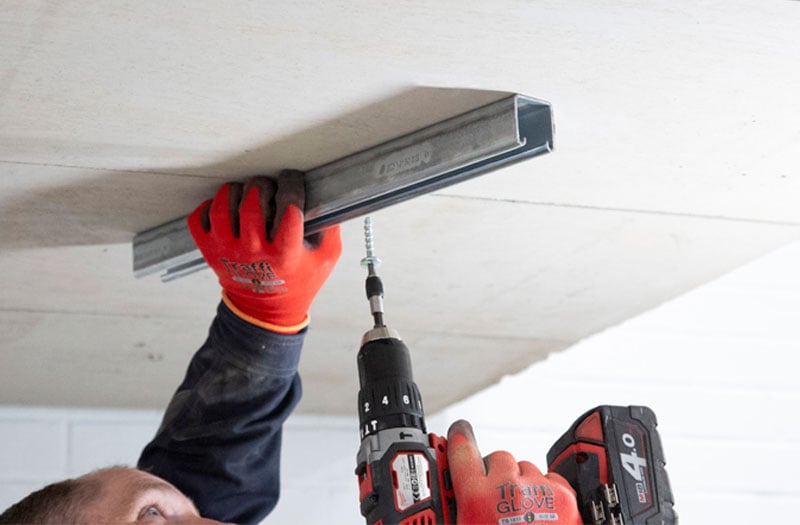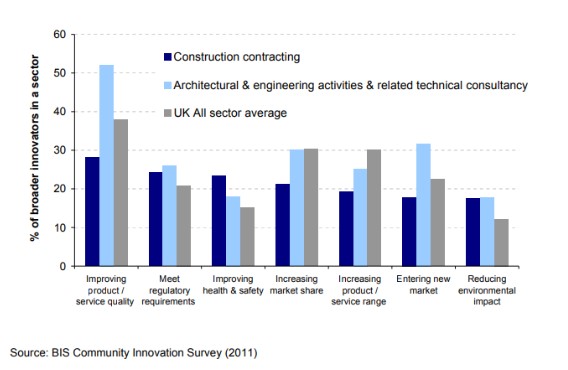Do you have evidence of compliant anchor installation?
With standards and regulations becoming ever more prevalent within the construction industry, protocols around installation must be followed. It is the responsibility of the contractor to ensure that best practice is maintained throughout the lifespan of a construction project.
In our latest sound-out Stevan answers the big question:
If challenged, can you demonstrate that the structure you have installed can take the service load applied to it and that the supports and fixings are fit for purpose?
Why are contractors being asked this question?
With the increasing number of standards, regulations and policy governing the construction industry when failures occur on-site, questions are often directed at the contractor. If a contractor can't show that best practices have been followed then they may be liable.
Multiple government reports have shown that one of the main drivers for innovation within the construction industry is the need to meet regulatory requirements.
Figure 3.4: Reported main drivers of innovation among broader innovators in construction.
How can contractors ensure anchor/fixing compliance on-site?
First and foremost the entire 'fixings chain' must be aware of the British Standards and regulations governing any installation on-site. In this article, we will cover BS 8539:2012 Code of Practice for post-installed anchors and fixings into concrete and masonry.
What is BS 8539:2012
The British Standard has been around for nearly a decade and sets out the responsibility of each stakeholder within an anchors/fixings supply chain. After several fatalities on construction sites, the CFA acted and amended a previous Irish fixing standard. The CFA concentrated its guidance on four key areas.
Selection, Supply, Installation, and Testing of anchors/fixings.
If BS 8539:2012 is taken on-board by all stakeholders within a construction project the specifier should be able to confirm the following.
- All anchors on-site have gone through the correct selection criteria.
- All anchors specified have arrived on-site.
- All anchors have been installed to the manufacturer’s guidelines.
- All anchors have been correctly tested.
We have created an easy-to-read table that outlines the responsibilities of each of the stakeholders as outlined by BS 8539:2012.
| Role | What BS 8539 states |
|---|---|
| Designers
Design the complete building which means they have access to all of the information incl. load rating and the substrate. In the M&E industry it is very rare that the designer is the specifier. |
The designer should outline the anchor/fixing, drawing on the manufacturer’s description and part code so that the supplier can select the correct anchor. When selecting an anchor, the following should be considered (which we will go into in more detail later): · The substrate that the anchor is being fixed into; cracked/uncracked concrete, block, brick, timber etc. (Clause 5) · Can the anchor sustain the load bearing of the application? · Environment of the anchor. Will it be outside, inside, humid or not and what finish is suitable? From carbon steel to zinc-plated to stainless steel, to high corrosion resistant materials. · Type of installation – flush-fixed or through fixing. · Type of anchor - torque-controlled, deformation-controlled, undercut or resin. · Approvals - does the anchor meet the ETA approval? |
| Specifiers
According to BS 8539, any individual within the supply chain of an anchor can be referred to as a ‘specifier’. They select the anchor/fixing. |
· The make, type, ETA number, size and manufacturer reference/order number · Instructions for installation · Guidance for the installer on what to do if reinforcement is hit when drilling |
| Contractor
Employs the installers onsite. It is their responsibility to ensure installers are trained. |
A compliant contractor should provide the correct anchor as specified. If changing this specification, they should carry out the due diligence to ensure that clause 10 of the change of management procedure is followed. If the contractor has seen that the anchor specified is not the correct one, they should inform the original specifier. The contractor should install the anchor to the manufacturer’s specifications (or training). |
| Manufacturer
Those that manufacture the anchor/fixing. |
The manufacturer should provide: · All information for the specifier to select the correct anchor; · Technical catalogues and software; · Installation instructions for the installer; · Recommended resistance (or appropriate safety factor to allow calculation); · Setting details including min. thickness of base material, edge and spacing criteria; · Installation instructions and equipment needed. |
| Supplier
Those that supply the anchor on site |
The supplier should provide: · Provide the anchor as specified, unless a specific change management procedure has · Take the opportunity to ensure all associated setting equipment is offered to the contractor such as drill bits, hole cleaning equipment, setting tools, torque wrench etc., so that the installer can install anchors correctly; · Provide installation training or facilitate this being provided by the manufacturer; · Provide guidance in anchor selection; · Ensure the change management procedure is adhered to if asked for alternatives |
| Installers Individuals that install a fixing/anchor into a substrate onsite |
BS 8539:2012 states that anchors should be installed and supervised by competent individuals. BS 8539 defines competent as: “Suitably trained and qualified by knowledge and practical experience, and provided with the necessary instructions, to enable the required task(s) to be carried out correctly”. When the anchor is originally supplied to site, the installer should look at the setting tools (e.g. torque wrench, torque specification and set the torque up correctly). The drill diameter, drill depth, recommended torque value and load bearing should also be taken into consideration. |
| Site testers Usually, a manufacturer or distributor that tests the anchor after installation, as requested by the contractor. |
BS 8539:2012 states that testing is not required if an ETA anchor has been used, installed and supervised by competent individuals. This means: · Anybody carrying out a site test should be qualified by the CFA. · Proof testing or allowable load testing CFA guidelines should be followed. · Correct reporting procedures as per CFA guidelines should be followed. |
How can a supervisor ensure compliant anchor installations?
It is often said that the biggest risk in the successful installation of an anchor is the anchor installer themselves. Unfortunately, rather like the selection of anchors, training requirements are not identified at an early stage in a project leading to untrained installers installing anchors.
There are a couple of learning points that all anchor installers should be aware of:
- Follow the manufacturer’s instructions.
- Understand how the anchor/fixing will fix into the substrate, is it cracked or non-cracked concrete, different substrates will affect the selection and installation of an anchor/fixing.
- Be aware of the working principles of an anchor.
- Recognise the different anchor installation methods – is it a flush fix or a through-fix.
- Acknowledge how to correctly use all setting and installation tools e.g. torque wrench, torque specification and how to set the torque up correctly, impact driver, hammer, blow-out pump etc.
- Only use the setting tool required for that specific anchor
- Be aware of how to clean the hole before installing an anchor, if you don’t do that you will not get the bond required.
- Understand what to do if the installation goes wrong.

BS 8539 installer training underlines the importance of using setting tools correctly;
‘When the anchor is originally supplied to site, the installer should look at the setting tools (e.g., torque wrench, torque specification and set the torque up correctly). The drill diameter, drill depth, recommended torque value and load-bearing should also be taken into consideration.’ Any specific setting tool should be designed for that particular anchor.
Why does anchor/fixing compliance matter?
Anchors and fixings are seen as commodity items and often left until the last minute when installers require them on-site. In many cases specifying anchors/fixings is usually the responsibility of the buyer teams, this shouldn't be the case. Buyer teams have a commercial mindset and may not see the value or have the time to correctly follow the guidance set out in BS 8539.
Remember whoever specifies the anchor becomes responsible if a site failure occurs.
There have many cases in the past where collapsed bracketry and anchor failure have caused fatalities. After investigation, the failure has been down to the incorrect selection of anchors or poor installation.
Summary
Anchor/fixing compliance doesn't have to be complicated. There is guidance available from the CFA to BESA.



